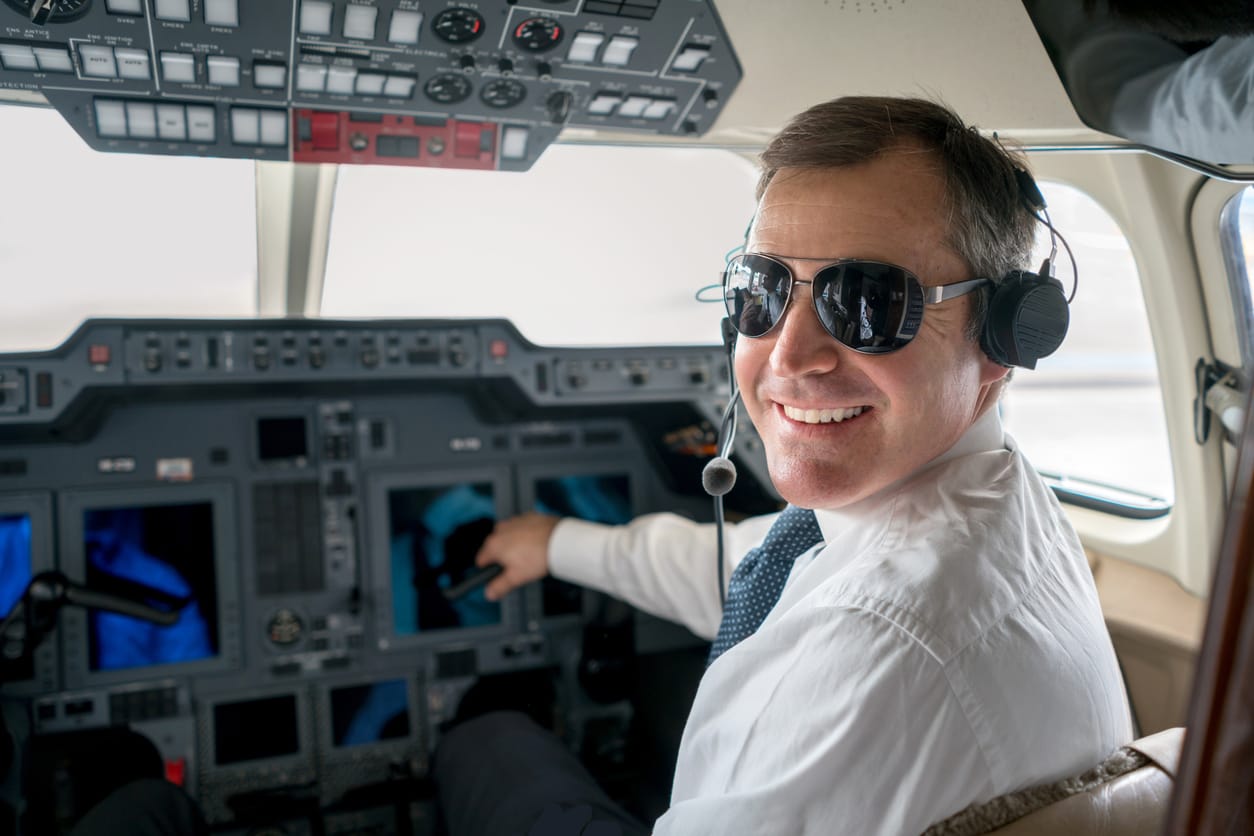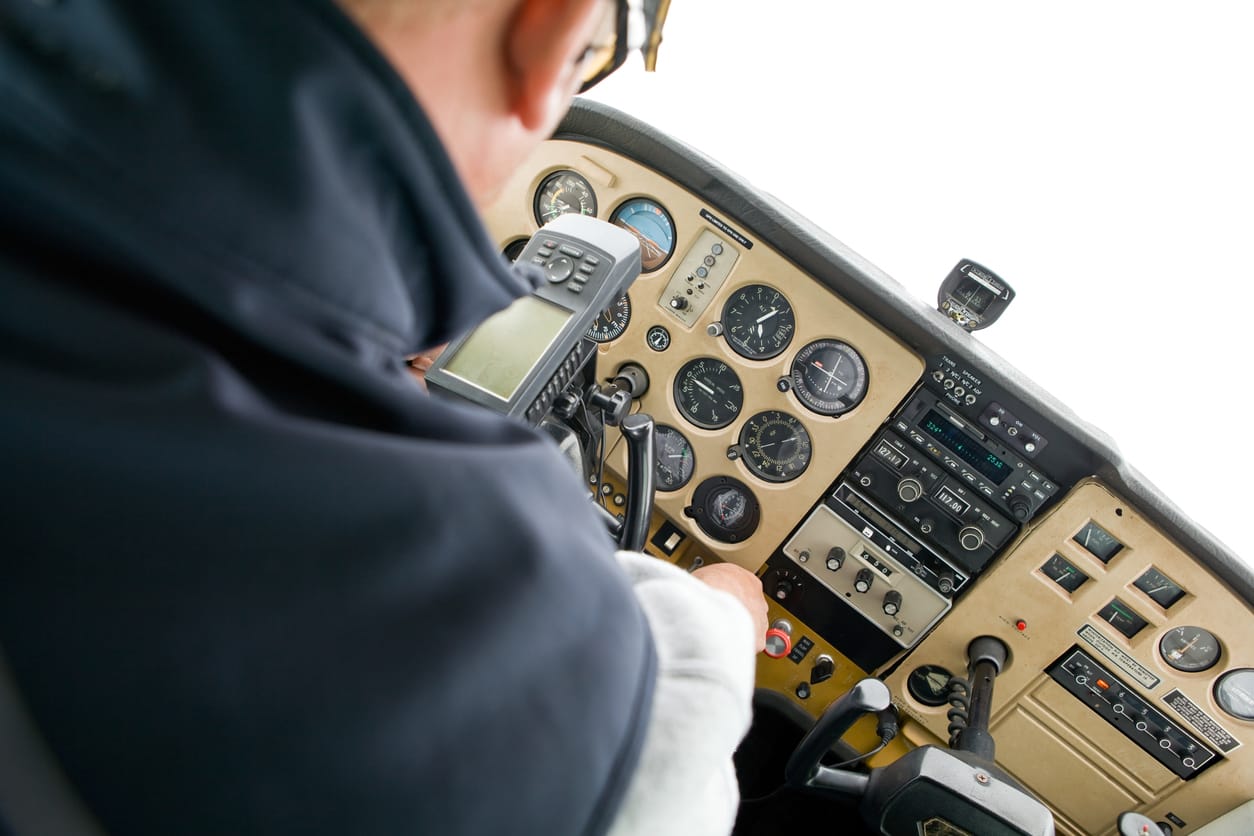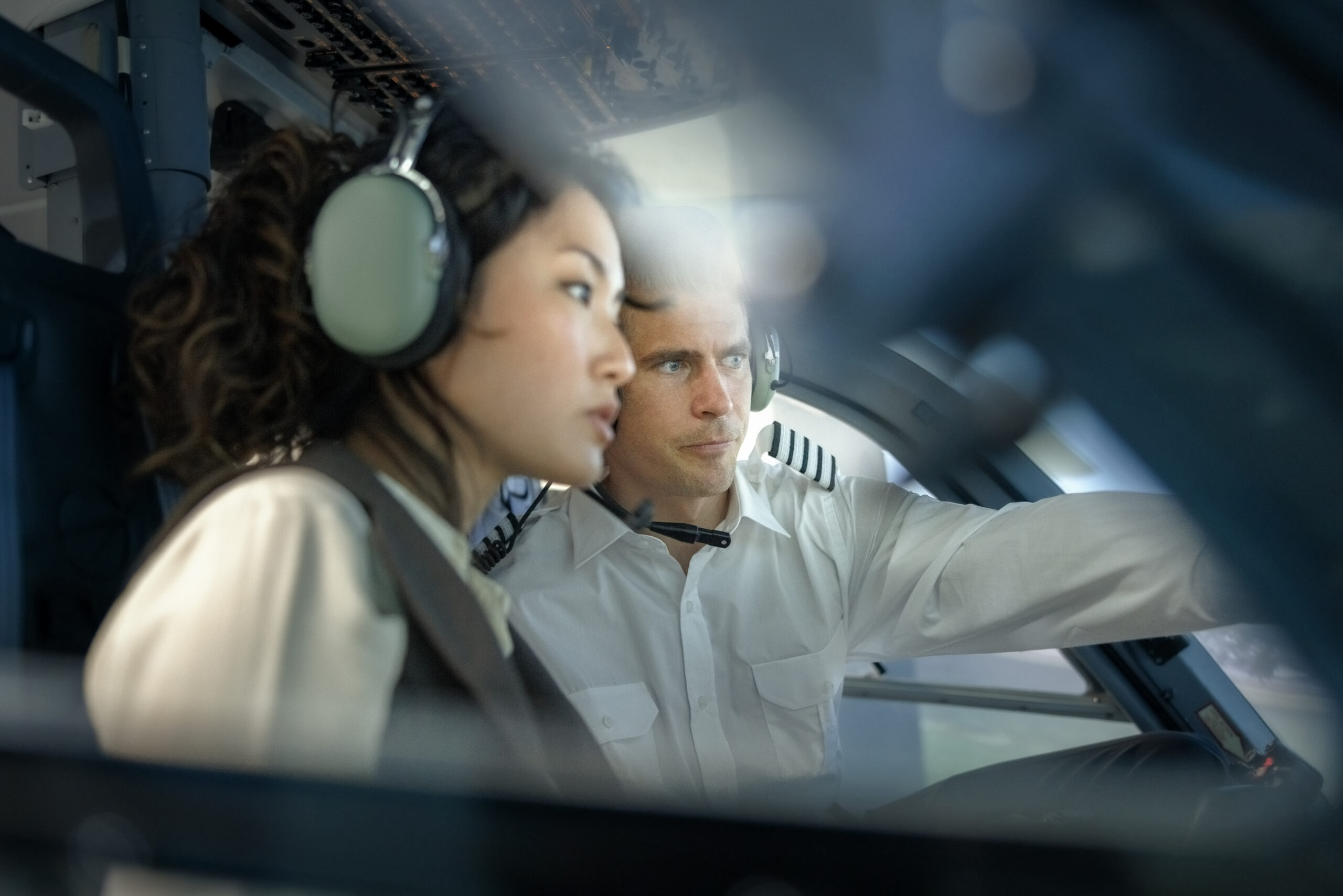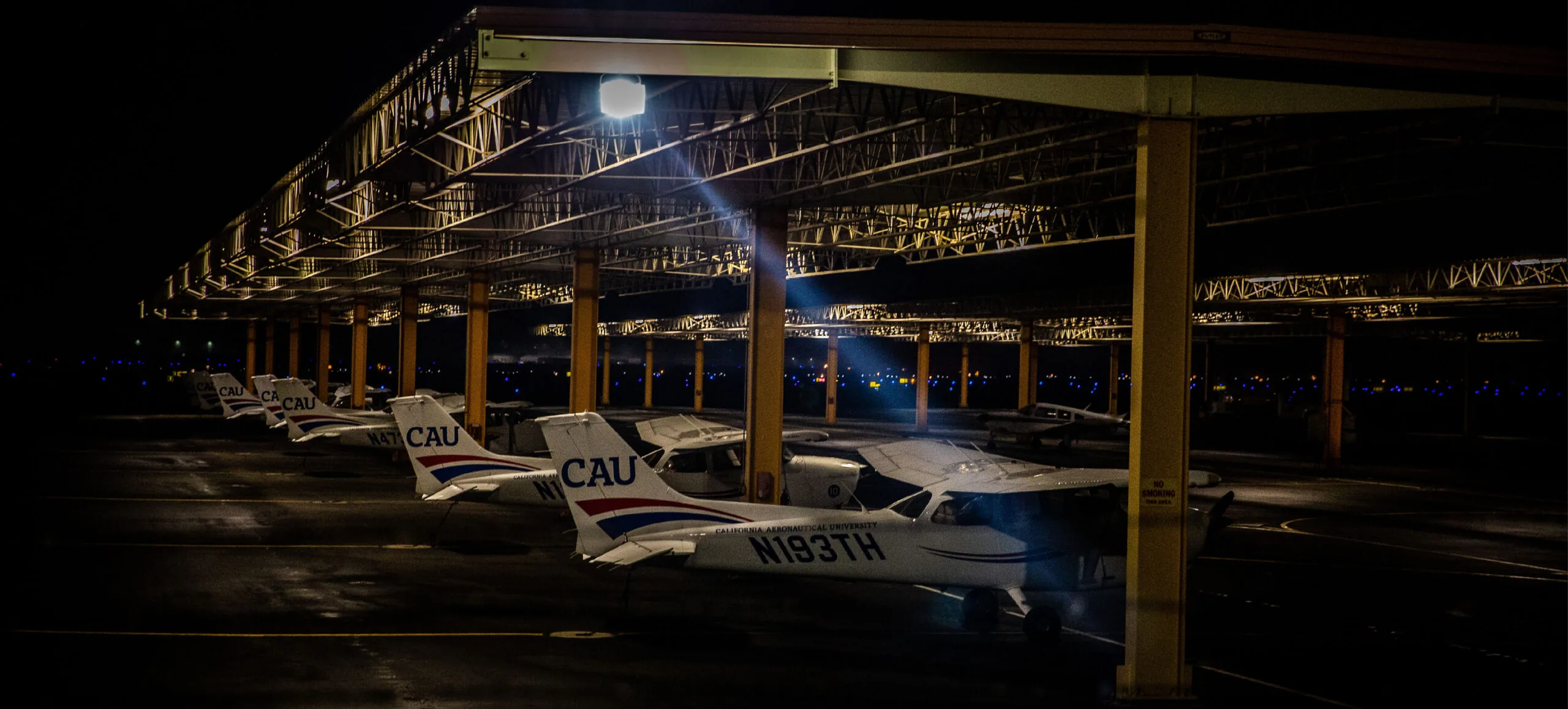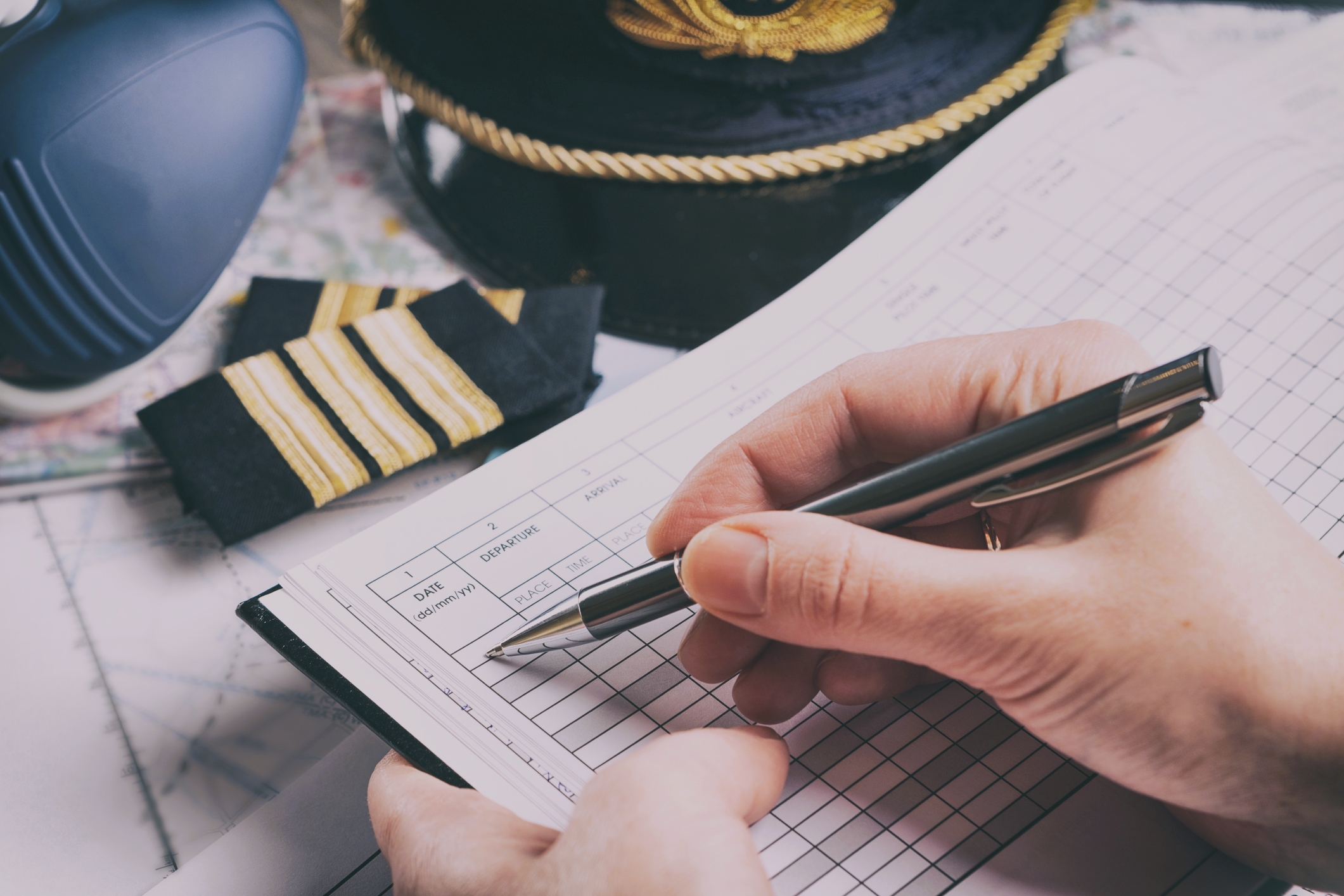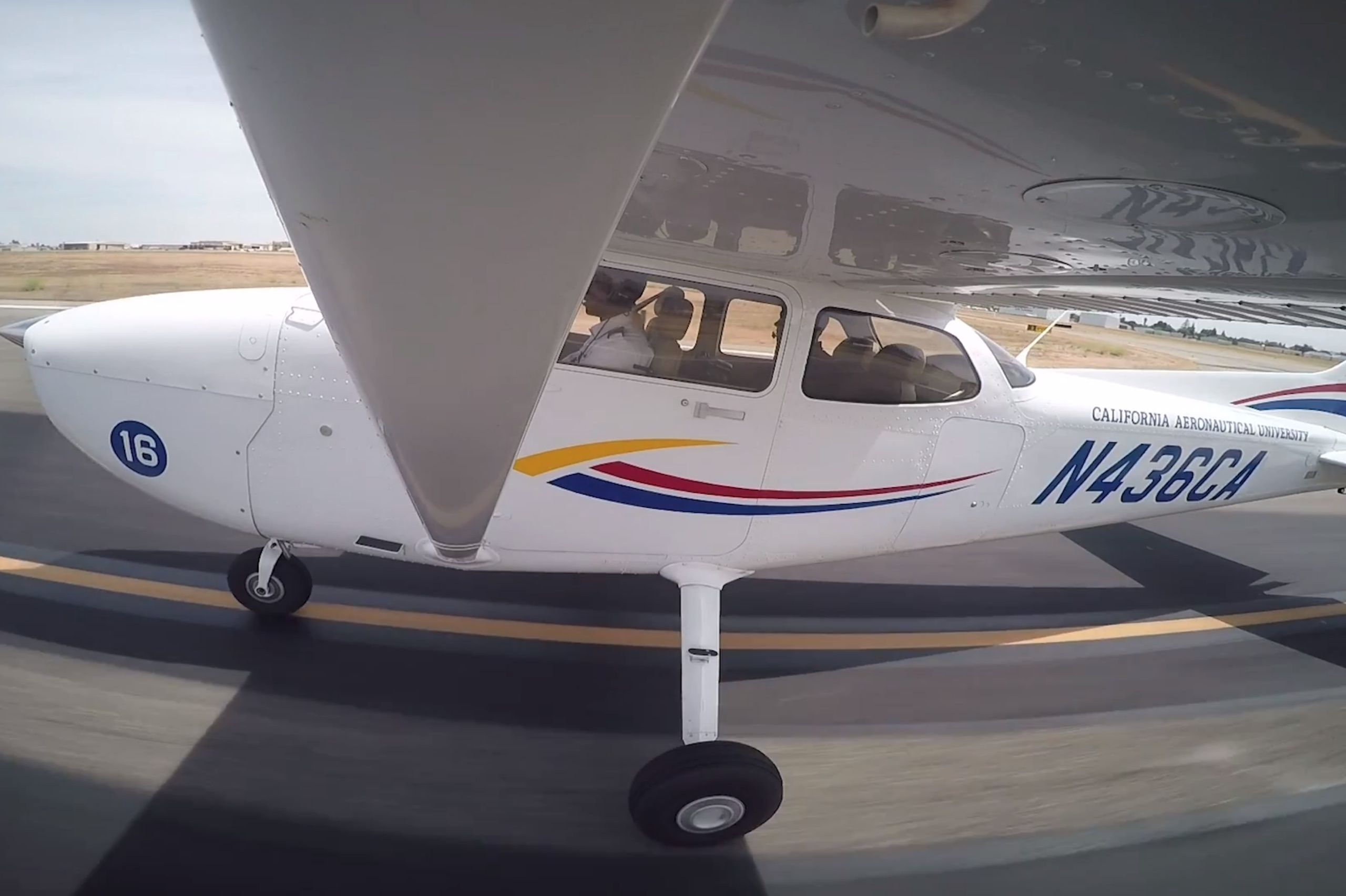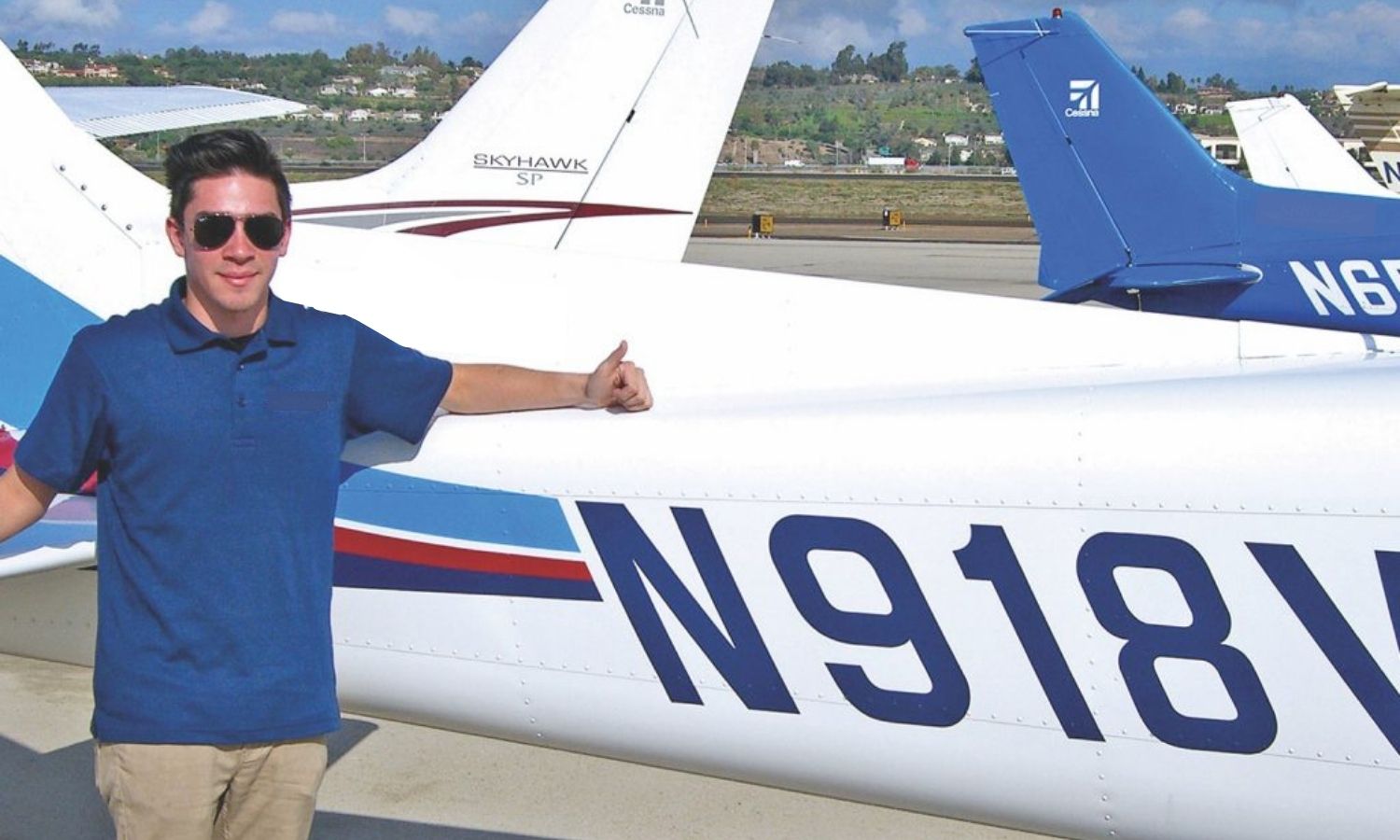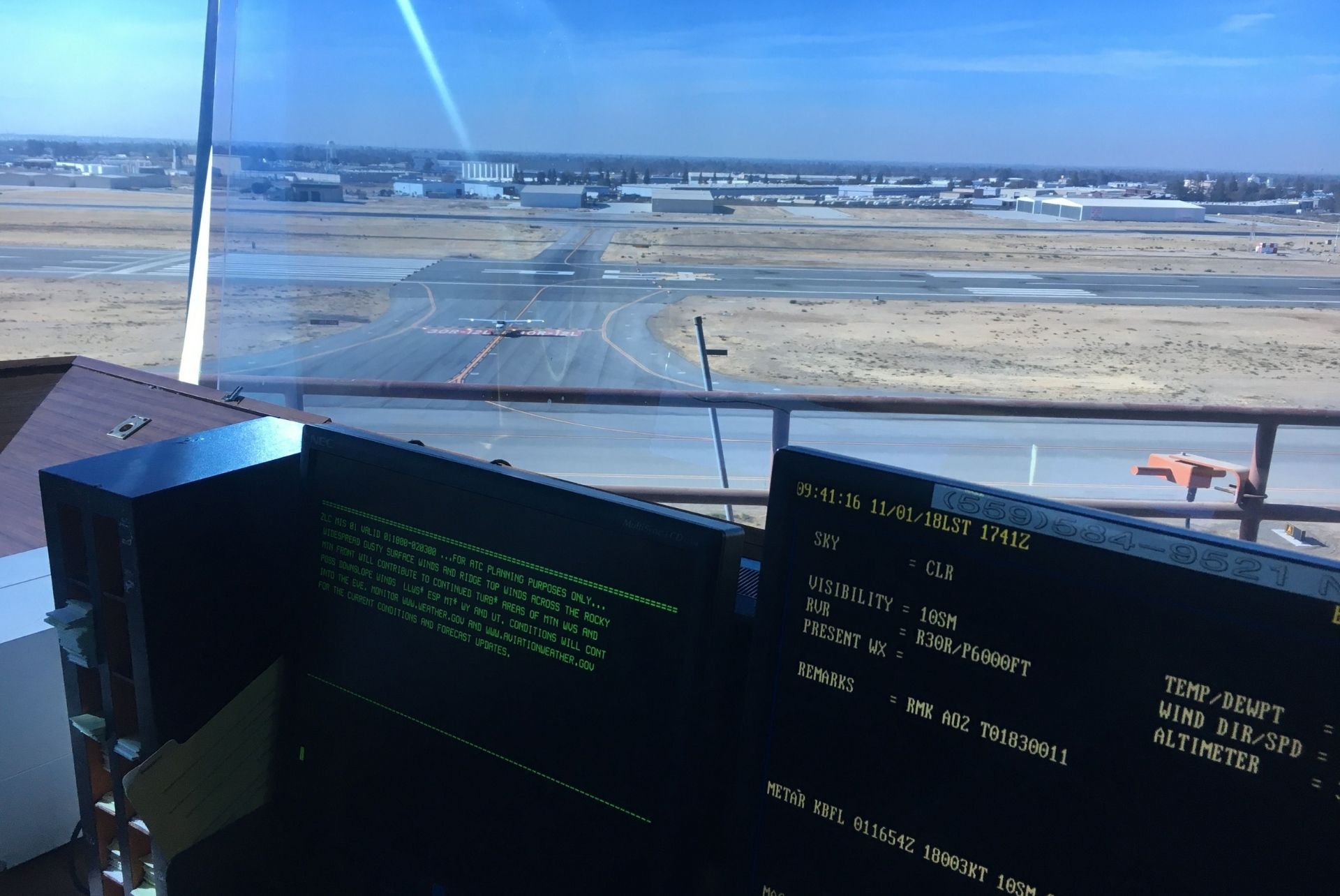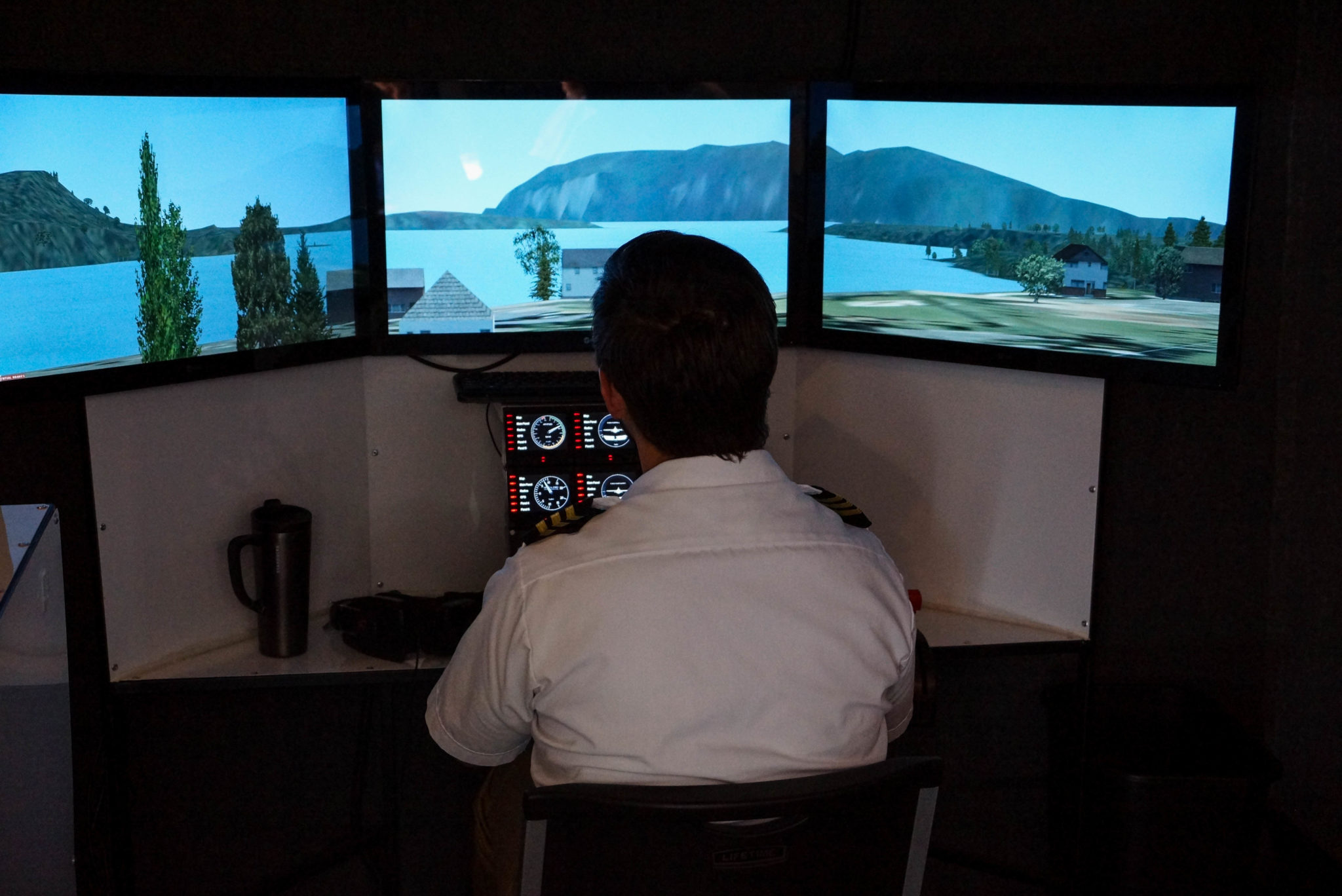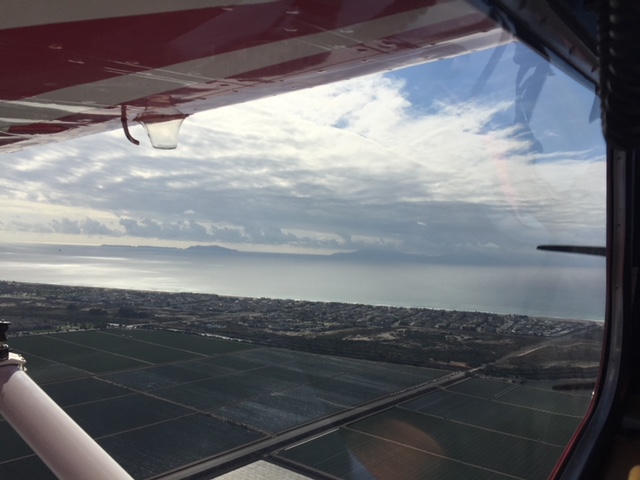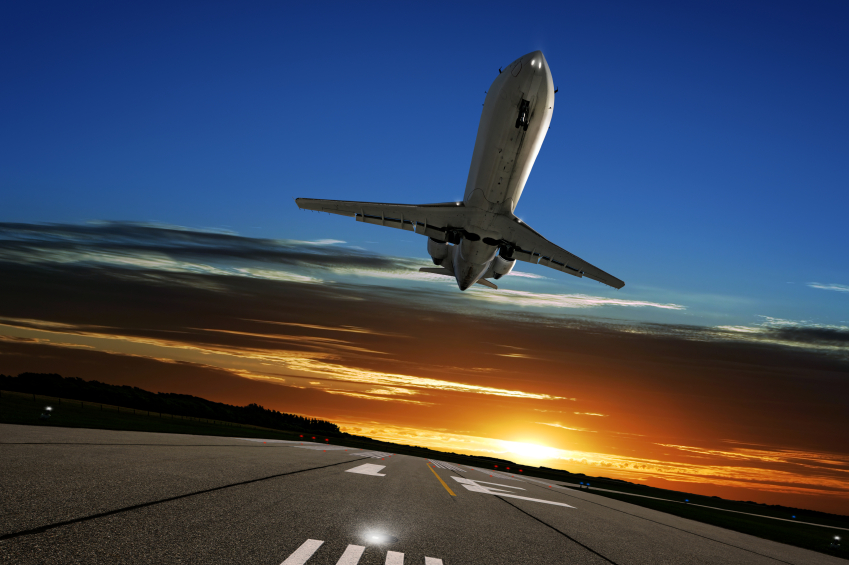Unlike actually flying an airplane, virtually all of us have been passengers in one. If we’re in an airliner, we watch the flight attendants move around the cabin and act predictably. We’ll hear cabin announcements made by the cockpit crew and, if we’re extremely lucky, we will even be able to hear the announcement well enough to understand what they’re saying.
Sometimes we look outside the window. Sometimes we even wonder what’s happening when the airplane banks to the side or descends. For the most part, though, we are being “taken for a ride” and just waiting to get to our destination.
If we have the special privilege of being a passenger in a “private plane” (for example an airplane with four seats including the captain), we’re rather more aware of what is happening. We see the captain move controls and knobs and switches, and we can often see and feel the result of these manipulations. The “yoke” or “stick” of an airplane is the main control “wheel,” kind of like a car’s steering wheel. It’s right in front of the captain. We can see, for example, that turning the yoke to the left tends to bank the airplane to the left. If you have never had this privilege, try to arrange for it: You will be fascinated by what you see, both inside and outside the airplane.
One of the most precious experiences you’ll have as a passenger in a private plane is that you can see out the front! The view while coming in for a landing can’t be beat.
Another advantage of getting a ride (more properly, a flight) in a private plane is that you can usually see the cockpit instruments. The numerous displays will look overwhelming at first but, with more experience, they will become your interesting friends, telling you more about what is happening during your flights.
One of the most unexpected elements of being a private-plane passenger is that you are much more in touch with the environment outside. As the airplane climbs, you will notice that it will get cooler inside the cockpit (unless the captain has turned on the heat); you will feel the winds; and you can even smell the ground! Pilots report that when flying an airplane into the airport near Hershey, PA produces a very strong chocolate smell from miles away. Flying over a pasture with lots of cows is a remarkable sensory experience, too, but we won’t get into the details here.
Differences Between Flying An Airplane And Being Flown
Beyond the context of those sweet-and-sour experiences, there’s much more to aviation if one is intrepid enough to delve deeper.
Imagine flying an airplane yourself! Sometimes you can be so lucky that your private-plane captain may let you use the controls for a while. It’s an amazing experience – one you will never forget. But there’s more.
If you decide to become a pilot – especially a professional one – then the aeronautical world offers up a very different array of experiences than what you’d find with simple passenger status. There’s a lot that non-pilots or new pilots find very surprising, too. That’s right: The way TV or the movies tend to portray pilots and their activities is rife with absurdly-incorrect “facts” and concepts. So let’s look at a few of these to help understand the realities of flying an airplane instead of the Hollywood producers’ flawed images.
Is Flying Freedom?
One concept the general public tends to have about flying an airplane is that it is an expression of vast freedom: Being able to climb, turn, and descend, to move about in three dimensions with no stop signs or dashed lines along the pavement, to head over to the lake or the business district at will seem to make the captain’s experience seem almost like that of a free-as-the-wind bird.
In most cases, it’s not like that.
Although flying in very rural or unpopulated areas includes airspace in which one can do almost anything, there are very large chunks of the United States over which flying an airplane is highly-regulated. Sometimes a pilot must be at a specific altitude, sometimes the speed at which he or she flies is limited, there are areas were one just may not go. An example: Without very special clearance, it is not legal to fly over the White House in Washington, DC. Makes sense, right?
So why would someone want to learn to fly if there are so many restrictions? We have three main answers:
1. The first reason is that there do exist some areas where “free flight” is available, and it’s really fun flying an airplane there! Within reason, you can create your own roller coaster, or sweep across beautiful natural places like rivers and herds of elk and evergreen forests, and with the right kind of airplane, you can land out in the country almost anywhere, even without an airport.
2. The second major reason is the precision of flying. A captain who can land on an exact spot on the runway; who can control speed and altitude within just a few knots (pilots use knots instead of statute miles per hour) and just a few feet; who can communicate with ATC (Air Traffic Control) with just the right wording and cadence: These are hallmarks of an especially-accomplished pilot.
3. The third reason is that you may want to become a professional pilot, like an airline pilot. Airline pilots begin learning how to fly in smaller airplanes and work their ways up to the jetliners. This represents ultimate expression of precision and capability.
Handling Private Planes As Captain
Let’s get back to piloting private planes, and now let’s compare it to driving a car.
In a car, if you want to turn left, you rotate the steering wheel left and the car goes there instantaneously. You can “turn on a dime” if you want to, and you have great control.
You can also stop really quickly: If you are moving slowly, you can stop within just a couple of feet. In any case, you can stop within several feet even on a freeway, if you need to. No, we’re not including icy roads for now. You knew that.
When flying an airplane, it is very different. Most controls have a lag – a delay between when you create an input (like moving the yoke or stick over to the side) and when the airplane begins to respond. “Begins” to respond because it may start to turn slowly, then the rate of turn will increase, faster and faster. The trained pilot knows how to anticipate this lag and how to counter it when it’s time. That is part of learning to fly. It’s not just like driving a car!
Unlike most cars, airplanes vibrate, especially when the propeller is going and the airplane is on the ground. There’s nothing wrong with that: The planes are made to handle this vibration. But it seems to mystify passengers sometimes.
Another major difference between driving cars and flying airplanes is how aware the pilot must be of the outside airspace. A good car driver will watch his or her environment a couple of cars ahead and to the side, as well as the car behind. The pilot, working in three dimensions and flying somewhere between maybe 100 knots (about 115 mph) and 300 knots (just under 350 mph), must scan the airspace all around very, very often. (There’s a special kind of flight called instrument flight where one cannot see outside the airplane, so there’s no scanning then, but we’re not covering that in this article).
When driving a car, one can often listen to music or talk with passengers during the trip. But when flying in a highly-regulated area, such as over an urban zone, the captain must pay high levels of attention to everything with an amazingly-intense level of concentration. Flight instructors sometimes have to yell their instructions or questions to flight students to break through this concentration.
Even when the ride gets bumpy (turbulence), often the pilot will not even notice because of how intensely he or she is concentrating.
Of course, the more experienced the flight student, the more he or she can allocate concentration to non-vital duties.
Even something seemingly-simple like deciding how high to fly is regulated. In aviation, there’s something called the “hemispheric rule” that pilots must memorize and use when flying an airplane. This rule tells them, based on the direction they want to go and the type of flying they intend to do, how high they may fly. You mustn’t just “go up until it looks nice” and keep flying in most airspace!
Hertz Rent-a-Plane
Nope. Once a person has earned a pilot’s license, he or she cannot simply go up to a place that rents airplanes, called FBOs (Fixed-Base Operators), and slap down some cash and go flying.
A renter not only must show his or her license, medical certification, and sometimes more, but then the would-be renter still has to go flying with one of the instructors of the FBO to prove competence. Once this instructor check-out flight is done, the FBO will usually let you rent in the future without so much rigmarole.
Conclusion
But wait! You said the experience was “awesome,” yet there’s precision, concentration, lagging controls, I gotta scan for other airplanes, I can’t just go up where I want, and I can’t go to Hertz to get an airplane! What gives?
The real feeling of flying an airplane is completely indescribable. It is wonderful. All of the stuff you see here becomes second-nature once you have good, solid, professional training.
No, it’s not as easy as driving a car. But the payoff is astoundingly-wonderful and worth every second of preparation.
Can just anyone become a pilot? No. It requires competence, maturity, dedication, and a love of aviation that will develop the moment you begin to learn. The sense of accomplishment is truly incomparable.
Can you become a pilot? You tell me.
Ready to soar in your aviation career?
Mr. Matthew A. Johnston has over 23 years of experience serving various roles in education and is currently serving as the President of California Aeronautical University. He maintains memberships and is a supporting participant with several aviation promoting and advocacy associations including University Aviation Association (UAA), Regional Airline Association (RAA), AOPA, NBAA, and EAA with the Young Eagles program. He is proud of his collaboration with airlines, aviation businesses and individual aviation professionals who are working with him to develop California Aeronautical University as a leader in educating aviation professionals.
